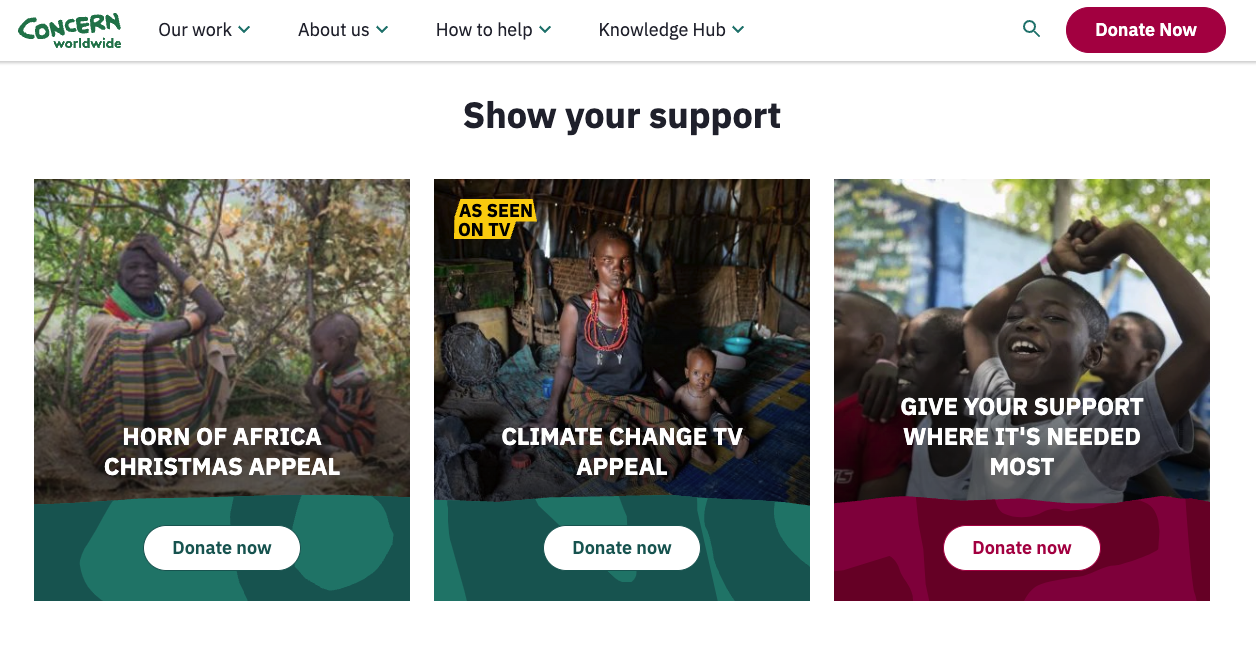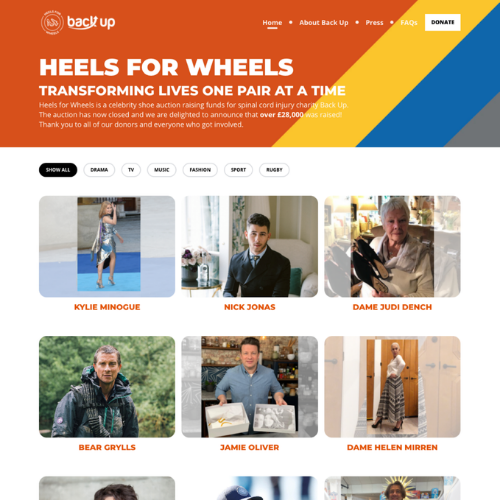
10 Tips for a Successful Web Development Project for Charities, Nonprofits and NGOs
Essential strategies for a seamless and effective nonprofit web development experience
As a senior professional at a nonprofit or NGO, you understand the importance of having a strong online presence. In today's fast-paced world of online technology and web design, it can be tough to keep up with current trends and best practices.
To help you stay ahead of the game, we asked our team members at SystemSeed, a web design agency for nonprofits and social impact organizations, to share their top tips to ensure your web development project is a success. Here are the top 10 tips they want you to know.
1. Emphasize UX:
Investing in a top-notch user experience (UX) is essential for the success of your project. Experts recommend allocating 20% to 30% of your budget to UX. A well-designed website will keep visitors engaged and ensure they keep coming back.
Concern Worldwide, a long-term client of ours, consistently works with us on improving and optimizing their UX. This has helped them grow their online income 10% year-on-year. Learn more about that here.
2. Appreciate the Power of Good Design:
Studies show that users are willing to put up with more bugs and fewer features if the design of a website is visually appealing and user-friendly. Good design is essential in attracting and retaining visitors to your site. A research paper back in 2010 titled "The Role of Aesthetics in Website Quality Evaluation" by Xiaodong Liu and Wei Wei demonstrated this clearly, and it's still true today.
Note: UX and visual design are closely related but are not the same thing. UX is about overall interaction with a site, and in this case, 'visual design' is more about how good it looks.
3. Consider Managed Hosting:
While managing your own web hosting may seem like a cost-saving measure, it can actually be a false economy for important sites or those with security concerns. Consider opting for managed hosting to ensure your site is always secure and performing at its best.
Site visitors who experience a very slow donation experience, for example, are more likely to drop out of the process and leave you with lower fundraising totals.
Hosting is also quite a technical area, so if you don't have someone in-house who is a specialist, it's a good idea to get some help. Learn about how we do hosting here and the technical architecture here.
4. Regular Audits are a Must:
Regularly auditing your site is crucial to maintaining its performance, security, and optimization opportunities. Aim to conduct an audit at least once a year. This is not a substitute for continuous monitoring by you or your technical partner, but rather an online health check.
A good technical audit should be a chunky process and cover factors including security, performance, technical architecture, and maintenance (here's an article about performance audits), but audits can include UX, design, and other factors too - depending on your needs.
5. Choose the Right Tool for the Job:
At SystemSeed, we're partial to Drupal, but it may not always be the best option for your specific needs. Consider alternative tools such as Raisely for fundraising or WordPress for quick blog sites.
Beware of any agency or software vendor that recommends a specific technology without first finding out about your needs and available budget.
6. Ensure Site Security:
Nothing is more important than the security of your website and online platforms. We've seen even government-level sites get hacked and the loss of trust that comes with it. Take the necessary steps to ensure the security of your site.
This isn't just about highly technical fixes - it includes things as simple as not sharing passwords and ensuring that only the right people have certain permissions for your site.
We do security audits for charities, nonprofits and NGOs regularly, so get in touch here if you'd like to get your site security properly reviewed.
7. Take Advantage of DevOps:
DevOps can be a game-changer for Agile projects. It can add efficiencies that can scale value and make your project run faster. Make sure your CI/CD (continuous integration and continuous delivery) setup is sophisticated and automated for maximum benefit.
I won't go into what DevOps is here, but if you want a good introduction from a business perspective, take a look at this video presentation from our Tech Lead Kate here.
DevOps can be a game-changer for Agile projects
8. Don't Delay Upgrades:
New versions of website platforms like Drupal and WordPress are released regularly. For example, support for Drupal 7 will end in November 2023. Upgrading as soon as possible will give you more time to focus on UX and design and avoid making hasty decisions in a panic.
We've written a lot recently about why and how to upgrade from Drupal 7, so if you want to learn more, check out these articles:
9. Seek Out a Single Supplier:
Working with one agency that can handle your hosting, UX, design, web development, and support can save time and money compared to managing multiple connections between different parts of your online world.
Look for an agency that can provide all these services to maximize the benefits, and ask them what the time and budget savings will be if you go to them for all of your needs.
For example, we are able to be much more efficient on support and maintenance for clients who also host their sites with us. That's because we have built extensive automated updates and testing that works on our hosting platform.
10. Write Effective Client Briefs:
Writing a clear and concise client brief is key to ensuring that proposals from potential suppliers fit your needs. It also streamlines the process for both the client and the agency as poorly written briefs can result in wasted time for everyone involved.
Learn how to do this and also build in the opportunity for agencies to talk to you in person as part of the procurement process. They will have questions that you won't have considered and that can't easily be resolved with written questions and answers.
By following these tips, you'll be well on your way to a successful web development project for your nonprofit or NGO.
Whether you're in the market for a new website or simply looking to upgrade your current one, SystemSeed is here to help. As a nonprofit web design agency with extensive experience in software engineering and especially Drupal, we're committed to helping organizations like yours achieve their goals.
Get in touch here if you'd like to talk about your project.
Want to know more about our services for charities, NGOs and nonprofits? Click here.


